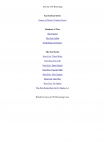The Oslo Affair (Shadows of War, #2), CW Browning [mobi reader android .txt] 📗

- Author: CW Browning
Book online «The Oslo Affair (Shadows of War, #2), CW Browning [mobi reader android .txt] 📗». Author CW Browning
“Just one, if you would indulge me, Herr Obersturmbannführer.”
“Yes?”
“What is so important about this particular English agent?”
The pen paused in its journey to sign the order and Hans looked up slowly.
“I wish I knew.”
Author’s Notes
––––––––
1. Oslo Report: Hans Ferdinand Mayer was a German mathematician and physicist who approached the British Naval Attaché, Captain Hector Boyes, in Oslo Station in late October 1939. He sent instructions which arrived by post, offering technical information on German military projects. He instructed for the BBC German broadcast to be altered to say “Hullo, hier ist London” and, if it was, then a package would be delivered. Boyes arranged it and on November 3, a packet was hand-delivered to the embassy. It contained 10 pages of technical information ranging from the development of experimental pilotless aircraft at Peenemunde to the introduction of radar along the German coasts, as well as advances made in the manufacture of bomb fuses, an example of which was included with the report. The package was sent to SIS Headquarters on Broadway in London, where it was received by Section IV on the basis that the air section was the only SIS section with any technical knowledge. However, they did not have the scientific knowledge to evaluate the report. They called in a scientist working for the Air Ministry’s Directorate of Scientific Research, Dr. R.V. Jones, who confirmed that all the information was genuine and that the Report was of the highest importance. Unfortunately, no one else agreed. At the time, all scientific research was so compartmentalized in England and other countries that SIS felt that no one scientist would ever have access to such a variety of information. What they didn’t realize was that Germany did not compartmentalize their research in the same way. Therefore, Mayer did indeed have access to the research he provided. But SIS concluded that the Oslo Report was a plant sent by the Germans to mislead them. Therefore, Mayer was never pursued as an asset. In time, the Oslo Report proved to be genuine as more and more things within it were confirmed and discovered, but SIS lost the opportunity to learn more by utilizing Mayer. (MI6 British Secret Intelligence Service Operations 1909-1945 by Nigel West, pg 111-112. Weidenfeld and Nicolson - London. 1983)
- Hans Ferdinand Mayer was born October 23, 1895 in Pforzheim, Germany; and died October 18, 1980 in Munich, West Germany. In 1936 Mayer became the Director of the Siemens Research Laboratory in Berlin. Unhappy with the Nazi regime, he arranged a business trip to Scandinavia in late Oct 1939. He arrived in Oslo, his first scheduled stop, on Oct 30 and checked into the Hotel Bristol. Borrowing a typewriter from the hotel, he typed the Oslo Report in the form of two letters over the course of two days, delivering it to the embassy himself. He returned to Germany and continued his scientific work until 1943, when he was arrested by the Gestapo for listening to British broadcasts on the radio and criticizing the Nazi party. He was imprisoned in Nazi concentration camps until the war ended. Because of the intervention of his mentor, a devout Nazi Socialist and Nobel prize winner, he wasn’t executed. The Germans never knew of the Oslo Report, or he would undoubtedly have been killed. As it was, he survived the war and went back to science. At his request, no one knew he was the author of the Oslo Report until after his death. (Wikipedia) (https://ethw.org/Hans_Ferdinand_Mayer)
- While Hans Mayer was in Oslo at the time indicated in this book, there was no scientific convention in Oslo at the time. For the sake of the story, I invented the convention as well as his associate and the meeting between him and Evelyn. Everything else relating to the Oslo Report, however, is historically accurate as portrayed.
––––––––
2. English roundup of German spies: In Sept, 1939, MI5 knew of six agents working in England for the Hamburg Station (German Intelligence). Four of them were interned at once, it being unlikely that they would provide leads to other agents. One was a Swedish woman, suspected of working as a courier and local banker for German intelligence. She was left with her freedom and watched until December, 1939, when she was arrested for giving false details on an exit visa. The last was a Welsh engineer - codenamed Snow - who had been briefly employed by SIS in 1936 until it was discovered that he was in contact with the Germans. After that, he remained in contact with SIS and, on Sept 4, 1939, offered his services to them again as a double agent. (British Intelligence in the Second World War, Vol 4, pg. 41 by F H Hinsley and C A Simkins. Cambridge University Press 1990)
- That was the extent of the officially documented German spies in London at the start of the war. The spy present in London in the book is a fictional character. To my knowledge, there is no record of any spies in London leaking SIS agent identities during the war.
––––––––
3. Battle of Barking Creek: On Sept 6, 1939, three days after war was declared, a radar fault led to a false alarm that unidentified aircraft were approaching from the east at high altitude over West Mersea, on the Essex coast. Six Hurricane fighter planes were scrambled from North Weald Airfield in Essex. However, two additional Hurricanes were also sent up in reserve. The two reserves were identified as enemy aircraft and Spitfires from Hornchurch were ordered to attack them. Both Hurricanes were shot down. One pilot, Montague Hulton-Harrop was killed, while the other pilot, Frank Rose, survived. Hulton-Harrop was the first fighter pilot to die in the war, and the Hurricane shot down in the Battle of Barking Creek was the first plane ever shot down by a Spitfire. (Wikipedia) (https://www.bbc.co.uk/history/ww2peopleswar/stories/70/a5781170.shtml)
- The friendly-fire incident Miles writes about in his letter





Comments (0)